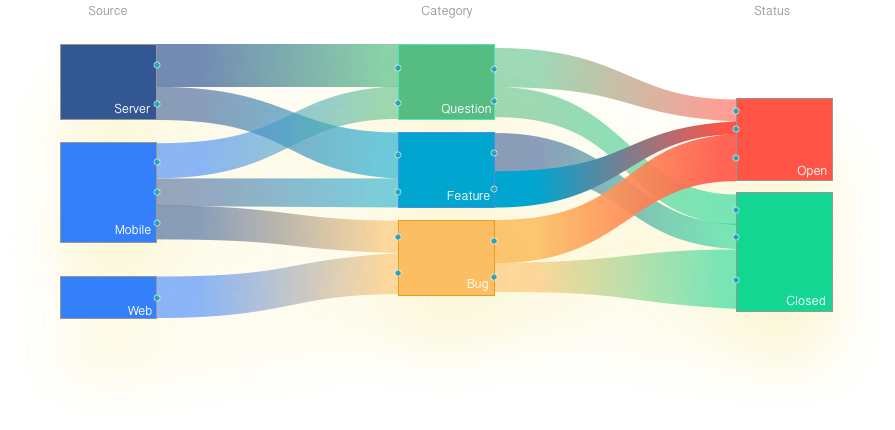Understand the connections in your data
Sankey state helps to understand and visualize your transaction data through a simple web-based interface.

Sankey state helps to understand and visualize your transaction data through a simple web-based interface.




npm install sankey-report
export DATABASE_URL=postgres://postgres:@localhost:5432/sankey
>sankey-report [enter] Serve directory "/Users/freegroup/draw2d_js.app.sankey_report/server" Admin UI: on http://10.87.155.238:6800/editor WebHook URL: on http://10.87.155.238:6800/backend/hook
{
"id" : 42
"event":"user:create",
"type":"User",
"content":{
"name": "John Doe",
"email": "john@doe.com"
}
}
{
"id" : 42
"event":"user:verified",
"type":"User",
"content":{
"name": "John Doe",
"email": "john@doe.com"
}
}
{
"id" : 42
"event":"user:deleted",
"type":"User",
"content":{
"name": "John Doe",
"email": "john@doe.com"
}
}
Now you has send the events to the WebHook and the diagram reflects the flow of one user registration.